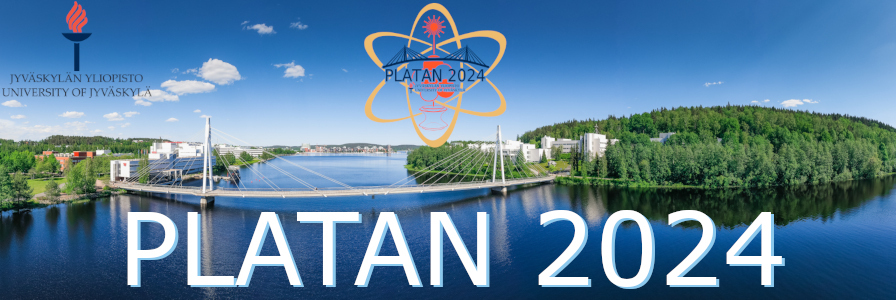Speaker
Description
The MIRACLS experiment at ISOLDE/CERN combines the usage of ion traps and lasers to probe exotic radioactive nuclides [1]. In order to increase the sensitivity of fluorescence-based collinear laser spectroscopy (CLS), MIRACLS traps ion bunches in a Multi-Reflection Time of Flight (MR-ToF) device. Hence, the ions are probed multiple times instead of just once. This increases the laser-ion interaction time with each revolution in the MR-ToF apparatus, while the high resolution of CLS is retained by using a high-energy MR-ToF.
A successful proof-of-principle experiment with 1.5keV beam energy showed that the MIRACLS technique is working. However, to perform high-resolution CLS a newly built high-energy MIRACLS setup is currently under commissioning, with the goal to measure the charge radii of $^{33,34}$Mg. These observables would deepen our understanding of the $N=20$ island of inversion and act as stringent benchmark for nuclear theory, in particular ab initio methods.
As part of the proof-of-principle experiment, we also performed studies of laser and sympathetic cooling in a Paul trap, normally used for buffer-gas cooling [2]. Even though this trap only has axial laser access, the time spread of $^{24}$Mg ions was drastically reduced by laser cooling. Moreover, we sympathetically cooled $^{16}$O$_2$, $^{39}$K and $^{25,26}$Mg. Backed-up by simulations, we demonstrated the feasibility of laser cooling at radioactive ion beam facilities in a time span of a few 100ms, compatible with short-lived radionuclides.
This oral contribution will introduce the MIRACLS concept, present results from a proof-of-principle experiment, show the new experimental setup and outline the opportunities of ultra-cold radioactive isotopes via laser cooling.
[1] S. Sels et al., Nucl. Instr. Meth. B, 463, 310-314 (2019)
[2] S. Sels, F.M. Maier, et al., Phys. Review Research 4, 033229 (2022)

